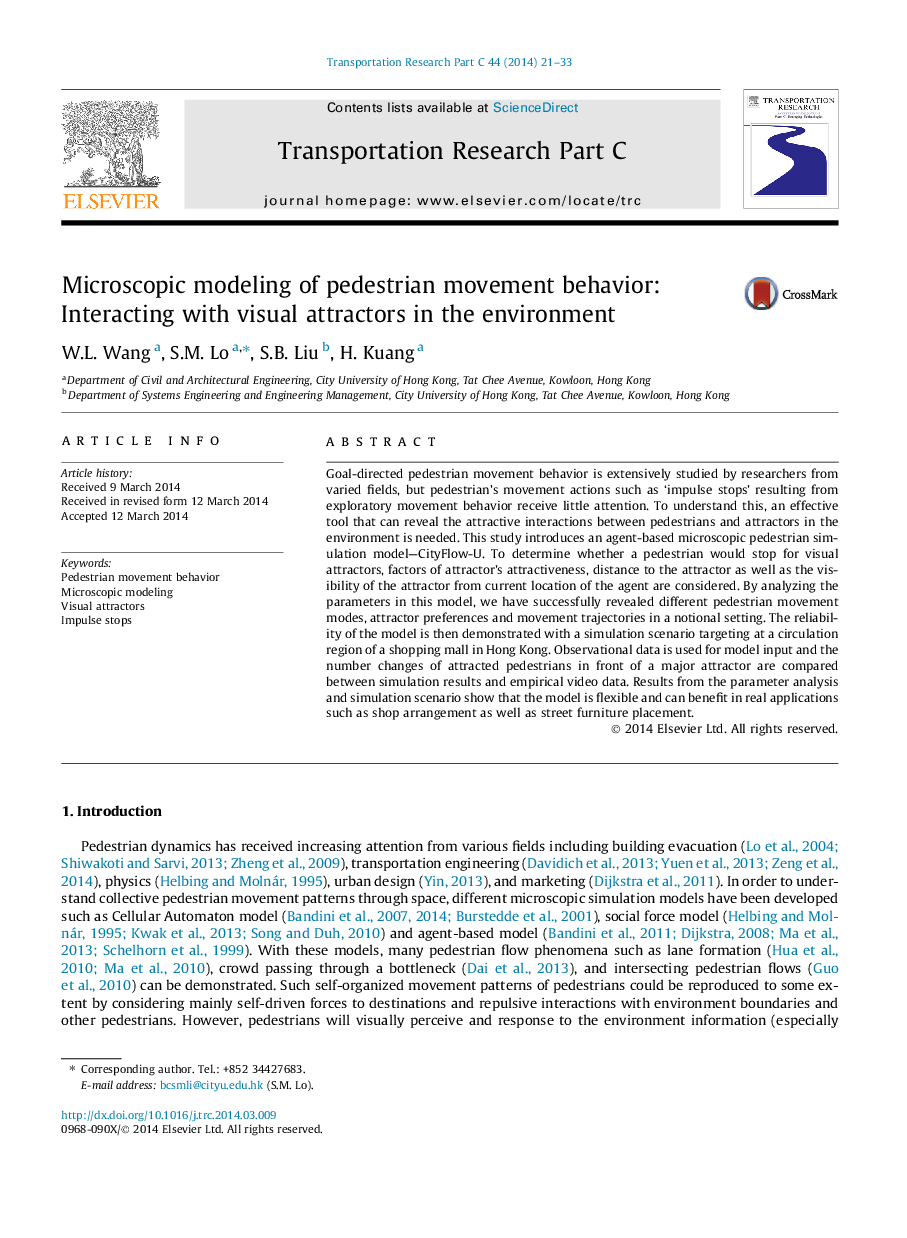| Article ID | Journal | Published Year | Pages | File Type |
|---|---|---|---|---|
| 524784 | Transportation Research Part C: Emerging Technologies | 2014 | 13 Pages |
•We develop an agent-based microscopic pedestrian behavior model—CityFlow-U.•Individual interactions between the pedestrian and visual attractors are simulated.•Attractor’s matching, distance and visibility are considered and analyzed.•Simulation results on pedestrian’s impulse stop action well fit the empirical data.
Goal-directed pedestrian movement behavior is extensively studied by researchers from varied fields, but pedestrian’s movement actions such as ‘impulse stops’ resulting from exploratory movement behavior receive little attention. To understand this, an effective tool that can reveal the attractive interactions between pedestrians and attractors in the environment is needed. This study introduces an agent-based microscopic pedestrian simulation model—CityFlow-U. To determine whether a pedestrian would stop for visual attractors, factors of attractor’s attractiveness, distance to the attractor as well as the visibility of the attractor from current location of the agent are considered. By analyzing the parameters in this model, we have successfully revealed different pedestrian movement modes, attractor preferences and movement trajectories in a notional setting. The reliability of the model is then demonstrated with a simulation scenario targeting at a circulation region of a shopping mall in Hong Kong. Observational data is used for model input and the number changes of attracted pedestrians in front of a major attractor are compared between simulation results and empirical video data. Results from the parameter analysis and simulation scenario show that the model is flexible and can benefit in real applications such as shop arrangement as well as street furniture placement.
